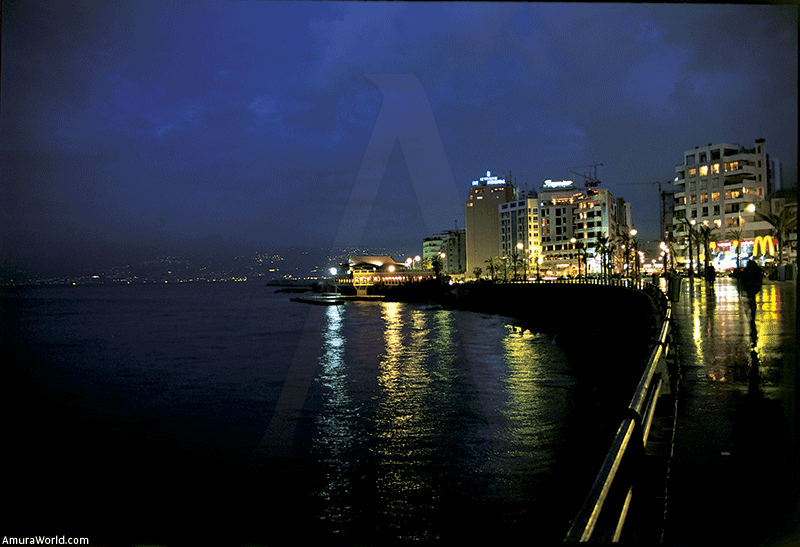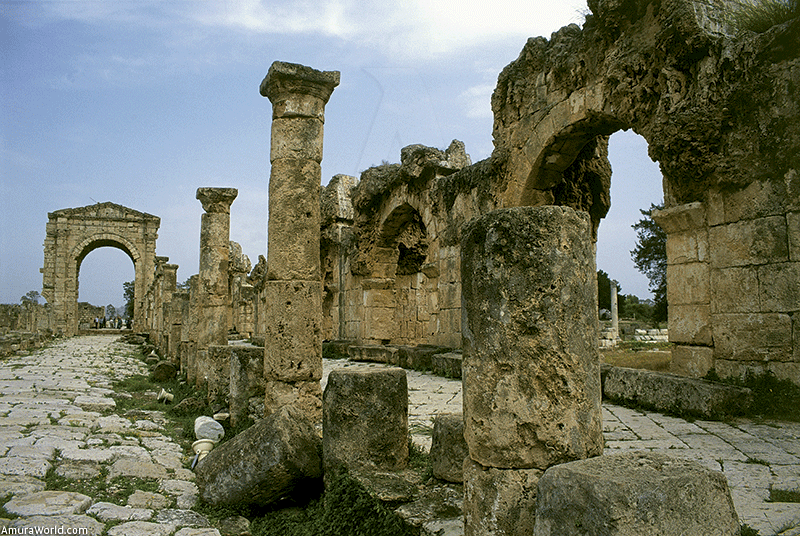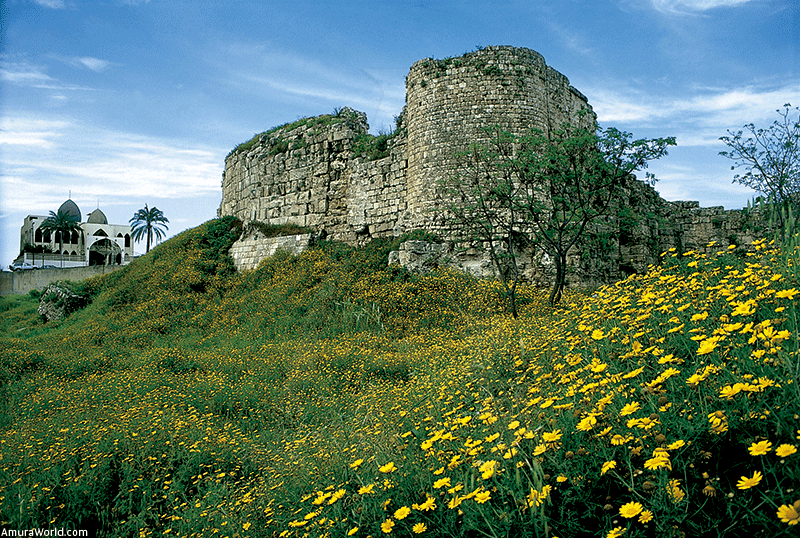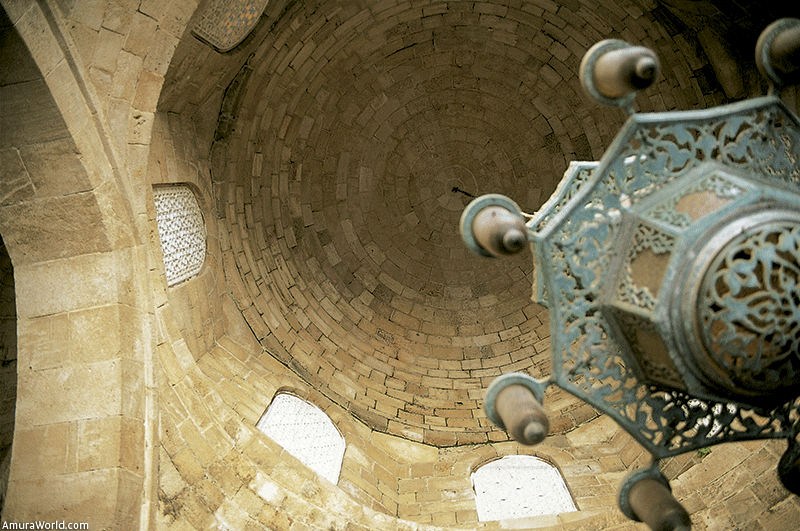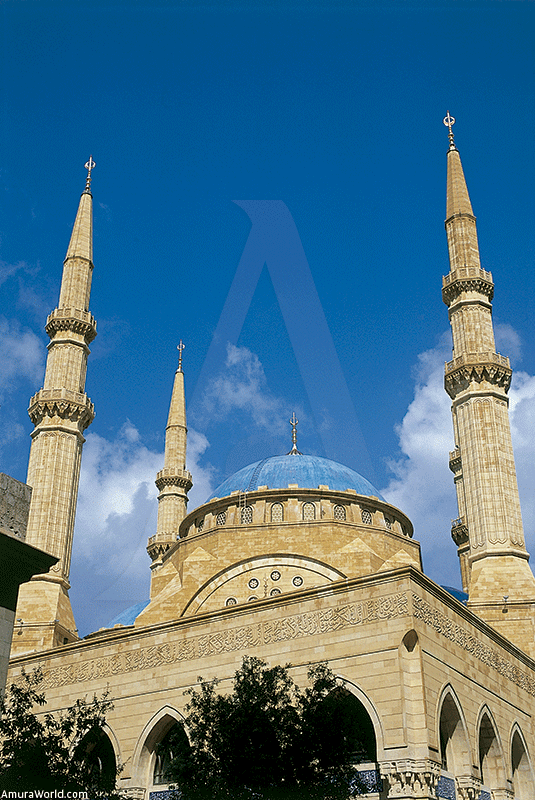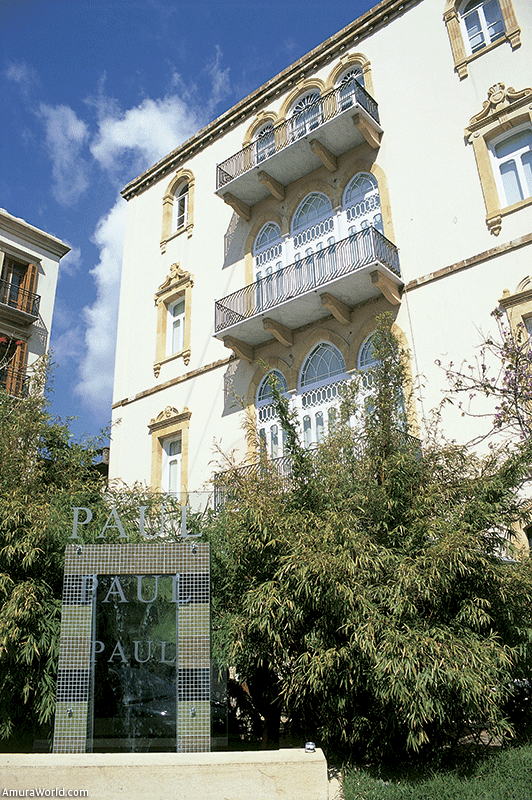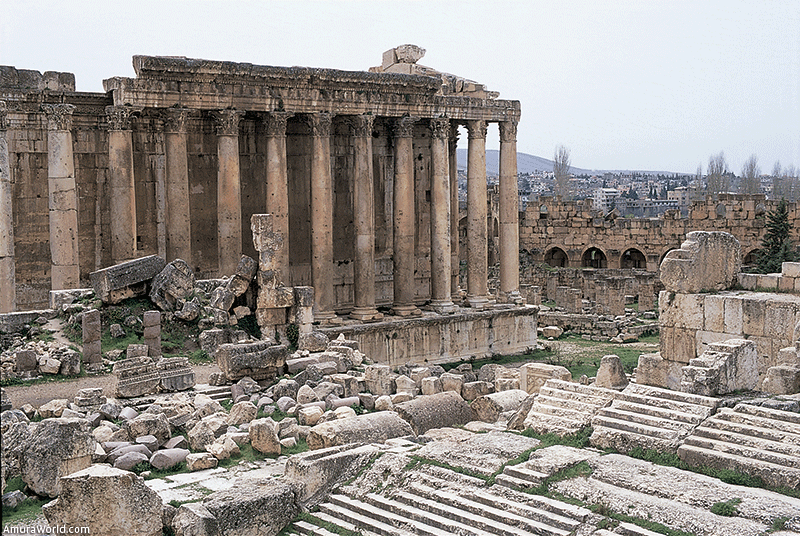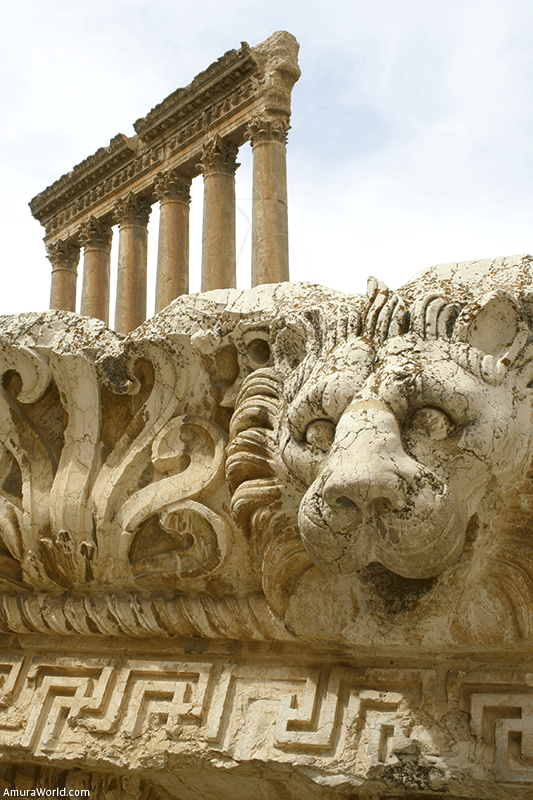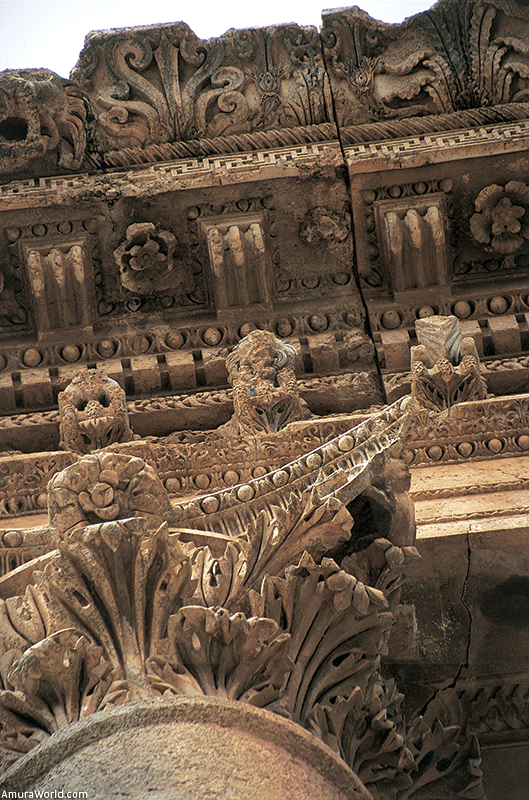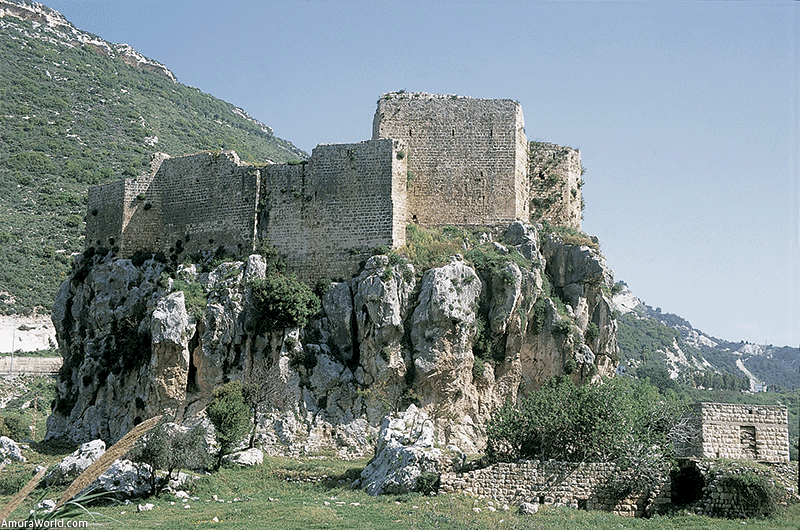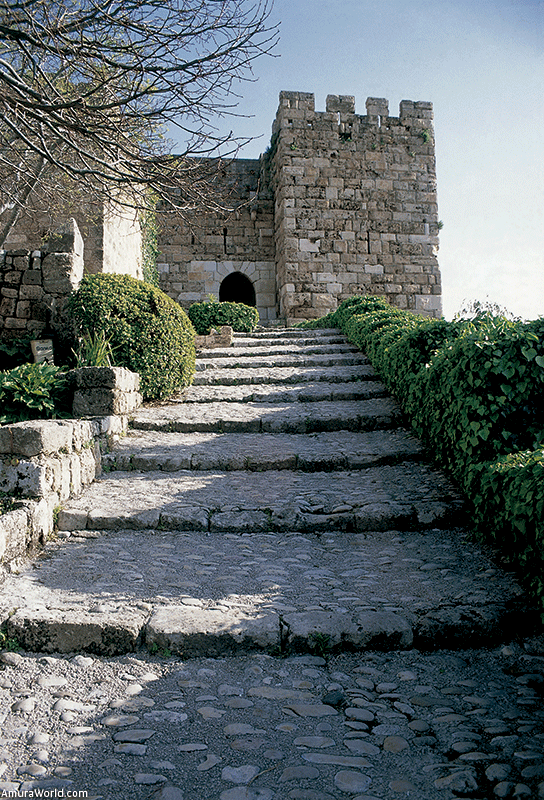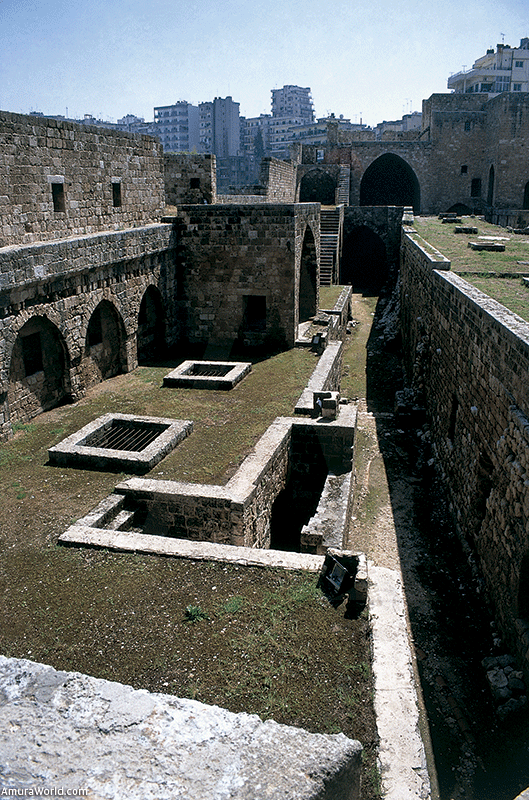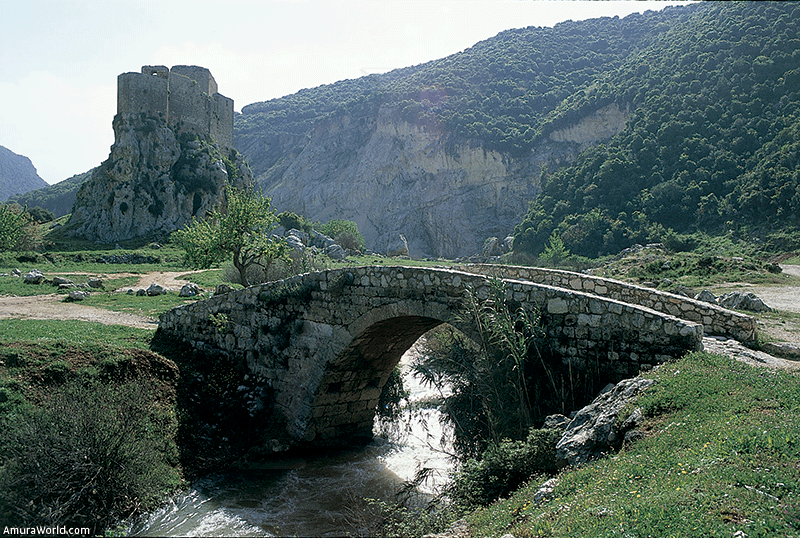From Tyre to Tripoli
Ahlan wa sahlan, welcome, to the world where, for over six thousand years, the steps of humanity have intermingled with scenes of wars and loves, beautiful buildings, incomparable gardens and ships that sail towards charming ports from a coast protected by the mountains.
It is a region of conflicts, of conquests, of religious wars, never sufficiently strong to build an empire, always invaded, desired by other great civilizations. The Middle East, originally inhabited by the Phoenicians, has seen the passing of the Egyptians, Assyrians, Babylonians, Hittites, Greeks, Romans, Arabs, Turks, Crusaders, English and French.
Lebanon bids visitors to discover the traces of its history and its shoreline offers the ports that were created by the Phoenicians. When sailing along its coast each stop is a window to the past, and, at the same time, each harbor invites them to discover a contemporary, splendid and charismatic world. Fascinating and enigmatic, it is a living fable.
From Tyre to Saida
Hurt by the recent events, the south of Lebanon is now peaceful and its charming, inquisitive people receive us warmly. We had arrived from Egypt and docked in the small port of Tyre, where fishermen return with small amounts of fish, perhaps due to the many centuries of exploitation of the Mediterranean.
The port is found in the Christian zone, located in a small peninsula dominated by the large church and livened up by the fishermen, the people going to church and to its small market. The zone is ornamented with very charming buildings and Mediterranean style houses that frame mysterious streets that lead to the ruins of the Church of the Holy Cross, so important to the Crusaders.
At the edge of the sea, the Al-Mina archeological site exhibits the remnants of the Egyptian port, the Roman agora and the avenue of columns, a number of huge Roman baths and an amazing rectangular arena. Along the length of the coast the elegant, modern buildings look out towards the ocean as well as a new mosque built at the end of the extensive beach. In the Al-Bass archeological site we found a great necropolis with beautiful sarcophagi, a stone paved avenue bordered by columns and decked out with a majestic triumphal arch, and an immense hippodrome.
In the mountains scarred by the wars and where Palestinians have taken refuge, the towns cure their wounds and the castles of the Crusaders, such as Tibnin, built by Hugues de Sain Omer in 1104, and Beaufort Castle (Qala’at ash Shaqif), built during the Byzantine age and conquered by the Arabs, dominate a striking scene. The very welcoming people are peaceful and busy with their rural life in a place where the rivers that descend from the mountains have carved stunning valleys and great ravines.
We sailed to the north, passing by a low coast where there are a series of long beaches and several rocky areas, discovering Sarafand (ancient Zarephath, where Elijah miraculously resurrected the son of a widow and which is now famous for its work in glass), until we reached Saida, also known as Sidon, one of the most ancient cities.
Saida, or Sidon, owes its revival to the Murex, a mollusk that makes purple ink and, later on, to the glass objects it produces since the 14th century B.C. The cemetery, many centuries old, is located over an ancient Murex shell deposit. The Sea Castle, built by the Crusaders in 1229, protects this peaceful harbor and it offers the perfect shelter. It is an important fishing port with a small area for yachts and sailboats and the very old city is located next to it, dominated by the ruins of the Saint Louis castle on the hill.
This walled city is explored through its narrow streets that guard authentic treasures from the past such as its mosques, hammams and the immense Khan Al Franj, a caravanserai that, in its huge central arched patio, lodged merchants and their wares. Some of the streets go beneath the houses and end up in the small plazas where the men smoke narguiles… The conversations are very lively and the people bid us to chat, to share, to sit, to eat and drink tea. It is an invitation to enjoy a simple, relaxed life.
From Saida to Beirut
Following the beach guarded by the immense mosque, we said goodbye to beautiful Saida, discovering various small cliffs that dot the beaches, until we passed the Verti airport and the length of the “corniche”, that seaside promenade framed by elegant buildings, discovering the two rocks of Les Pigeons, a symbol of the city, and reached the marina.
The first thing that amazes of this great metropolis located at the foot of the mountains is its intense existence immersed in the usual noises of a city as well as eastern music. The people, also wishing for moments of peace, want to have fun and enjoy a pleasant time.
In the old, completely restored neighborhood of Art Deco style around the Place de L’Etoile, the terraces of the cafés and restaurants are full, the conversations are lively, men and women smoke the water pipe, or narguile, and the stunning bars are filled with the fantastic wish of enjoying this charming way of life. The wounds of the turbulent past are starting to disappear, the scars on the buildings are fading as they are brought back to their former architectural glory and the city is resurrected over the traces of its rich history. In the Place de l’Etoile neighborhood the golden limestone building with their dazzling windows are home to important brands like Cartier, Gucci and Boss, among others. The conversations on the terraces are the sweet music of this marvelous ambiance.
The mosques, the churches, the vestiges of the Roman temples and the Phoenician ruins live in harmony and the sacred places have changed their religion. This is the case of the Al-Omari Mosque, which was originally the church of Saint John the Baptist, and the superb Saint George Cathedral, which is of the Maronite religious group. The Great Mosque raises its golden towers towards the blue sky, protecting those of the neighboring church.
Gouraud Street is where trendy restaurants and bars are located and the terrace of Paul, the finest pastry shop in Beirut, is filled with handsome people driving eye-catching cars. In the Achrafiye neighborhood the elegant buildings live side by side with the bars, restaurants and a very modern shopping center. The Albergo, an exquisite hotel decorated with eastern antiques, is the ideal spot in which to relax in this city that beats to the passionate rhythm of a rebirth marked by the enjoyment of life’s pleasures and its warm nights.
In the afternoons people stroll along the corniche, Muslims and Christians meet, fishermen defy the sunset to capture the finest fish and the elegant apartments admire the sea and a horizon that, for centuries, has seen so many ships set sail. In the Saint George Bay, the marina waits for the return of its Mediterranean lifestyle, such as it knew when Beirut was the little Paris of the Middle East and a never-ending party during the hot summers. The best hotels are being built on its shore.
Baalbeck and the Bekaa Valley
Passing the mountain that dominates Beirut you reach the fertile Bekaa Valley, swathed in fruit trees, vineyards and cultivated fields and harvested since ancestral times. Since 1857, the Jesuits turned a number of caverns into natural wine cellars used to store the live oak barrels where they matured the wine and now they have been enlarged and are two kilometers (1.24 miles) long. The Ksara wine is well known and is produced by vines planted since the 18th century.
Zahle, a small city hidden in a gorge where the torrent that descends from Mount Lebanon runs, is renowned for its restaurants, parties, elegant houses and the crowds of people who arrive for the weekend or to spend vacations.
No doubt, Baalbeck was the great city of the valley. Created by the Phoenicians and conquered by Alexander the Great, who called it Heliopolis (the City of the Sun), it was the Romans who built this beauty beginning in 60 B.C. In the third century, when Christianity became more important, the city continued to become even more striking. Later on its immense columns were taken apart and used in the construction of Saint Sophia in Constantinople. Finally, the Muslims used its stones to build a citadel. The elegant columns held up roofs adorned with capitals, friezes, and lintels with lion heads akin to gargoyles, niches with elegant statues and the fountains where the crowning touch of this gorgeous city. The impressive temple of Jupiter overlooks it. It had 54 columns 22.9 meters (75 feet) high, the tallest in the world. Today only six survive, as if defying time, and on them rest the blocks of carved stone that were part of the roof.
The extraordinary temple of Bacchus was dedicated to Venus and it raises its portico with 15 columns to each side and eight on the facades. It is one of the Roman world’s most adorned temples and, because of it, Baalbeck vied in beauty with Rome. Its ruins are a testimony of its greatness, a place where humans sought to impress their gods.
Anjar, another treasure of the valley, is believed to be the most ancient Muslim city in the world. It is outstanding due to its streets traced in the Roman style and framed by sidewalks covered with arches, the ruins of the ancient palace of Caliph Umayyad, its ruler, and the hammam.
From Beirut to Byblos
North of Beirut the mountains draw closer to the sea and the shoreline is rockier, with small enclaves in which to take shelter, beautiful beaches and amazing caves. The highway follows a coast covered, along its length, with large buildings, many restaurants and diverse vestiges of ancient times on the slopes of the high mountains.
Jounieh is a city that beats to the rhythm of its party-like ambiance during the summer and is renowned for its discos scattered along the bay and for its coast dotted with hotels, restaurants and nightclubs that frame the finest beaches bathed by the turquoise water.
Byblos, known as Jbail, preserves the charm of a small Phoenician fishing port. Its cobblestone streets descend to the sea and its ancient buildings have been restored and now are interesting shops that sell fabulous fossils of shrimp, fish and mollusks.
On the edge of the sea are the ruins of the ancient city with the castle built by the Frankish Crusaders in the 12th century, the wall, the ruins of the antique temples of Resheph and Balaat Gebal, which date from the 3rd and 4th centuries B.C.; the one of the Obelisks, that was sanctified in the 19th century B.C.; as well as the ruins of the Roman theater.
In the medieval city, the area of the souq (market) is outstanding as are the church of Saint John the Baptist and the port, watched over by its protecting towers that used to be linked by a chain. An important harbor since ancient times and from where cedar wood was exported, during the decades of the 50s to the 70s it was a site favored by the jet set, who invaded it during the summer, turning the Fishing Club —the kingdom of its monarch, Pepe de Pirate— into a popular place where movie stars paraded by. Now it is a sleepy fishing village that, during the weekends, vibrates to the beat of its crowded café terraces and bars that have a relaxed ambiance and offer a view of spectacular sunsets.
From Byblos to Tripoli
The coast follows the trace of the mountains and includes attractive beaches framed by rocks, dotted with summer places and where we found Batroun, a small village of mainly Maronite fishermen and whose history dates back to the time of the Egyptians.
Passing Qubba Cape we discovered the Bay of Chekka and the small town of Enfe and its sunny marina, where modern apartments are leased for the summer.
Finally we reached Al Mina, the great port of Tripoli, with its pleasant corniche (seaside promenade) where the finest restaurants and cafés of the city are located. The port is enormous and very active and the Palm Islands, a favorite place of the great amount of birds, beautify the horizon.
Tripoli is a very lively city and the ancient sector conserves the streets of its souq, the beautiful facades of the medersas (religious schools) and mosques, the intimacy of its hammams, the grandness of its caravanserais and the aroma of olives and cakes made with honey and pistachios. The monuments, such as the Madrasa Al Qartawiyya Mosque and Khan as-Saboun, where perfumed soaps are sold, are part of the charm of this city that preserves its medieval air and which is guarded by the fort of Raymond de Saint Gilles. It is a very pleasant to explore its small plazas and cafés, chat with people while smoking a narguile and enjoy the excellent cuisine.
The Valley of Qadisha
In order to visit the mountains we drove along the narrow highways that go through the impressive ravines. The towns found wonderful places in which to prosper, there are castles that mark the places where the Crusaders passed and the sanctuaries and churches commemorate the saints.
The Qadisha Valley permits visitors to discover an impressive canyon that descends from the mountains and the beautiful town of Bcharre, dominated by its bell towers, that is located in the heart of the highest mountains of Mount Lebanon (2823 m/9261ft), where we discovered the last of the famed cedars, witnesses of the forests that used to exist, and the best ski station with excellent runs that are open until April.
This valley shelters the most handsome Maronite towns with their ancient churches whose bell’s mystic music clothe the slopes of the mountains. It is an amazing, stunning region filled with religious vestiges, sacred chapels and pilgrimage sites like Edhen, the chapel of Mar Chmouni and Deir Qannoubin, centuries old sacred places now and then built in natural grottos. B’qaa Zafra is the highest town in Lebanon (1750 m / 5741 ft) and renowned for being the birthplace of Saint Charbel, the most famous saint of the country.
The cedars of Lebanon have been the witnesses of the glory of this region marked by the passing of universal history and they embellish the flag of this country. After being exploited for many centuries, the forests of cedars have disappeared and there are only a few left that are adorned with snow during the winter.
Lebanon is a country that conquers with the beauty of its scenery and the fabulous remains of its varied epochs, ranging from the Phoenicians to the tumultuous present and the likeable disorder of its modern cities. However, Lebanon is essentially attractive thanks to its people, who are handsome and charming, proud and affectionate, cordial and conversational. It is a fabulous Mediterranean treasure even though it is a land that has experienced much spilling of blood caused by the ambition of human beings.
Our route continued north, along the coast of Syria, but that is another story. It is a place where the past is discovered around every corner and where the cities of ancient times show us how they admired the steps of Jesus, of the Romans and the Crusaders.
Text: Patrick Monney ± Photo: Patrick Monney.

